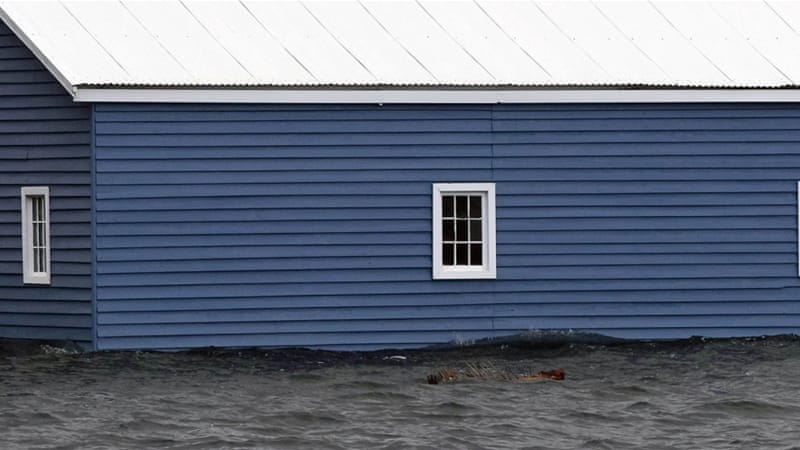
Western Australia hit by 'once-in-a-decade storm'
Ex-Tropical Cyclone Mangga hits Perth, downs trees and leaves tens of thousands of people without electricity.
About 47,000 of homes and businesses were left without power across the state of Western Australia on Sunday, as a severe storm brought wind speeds of more than 100km/h (60 miles per hour), according to officials.
Wind gusts of up to 132km/h (82mph) were recorded at Cape Leeuwin in the far southwest of the state.
Jon Broomhall, acting assistant commissioner of Western Australia's Department of Fire and Emergency Services, called the storm "a once-in-a-decade-type system", local media reported.
A Bureau of Meteorology (BOM) official, James Ashley, said the weather formation was dynamic and complex, as a system from Cyclone Mangga in the southern Indian Ocean interacted with a cold front.
"Pretty much the whole of WA [Western Australia] will be affected by this system which makes it really quite unusual," Ashley told reporters.
"It's affecting a large area. Normally, at this time of the year, we're just concentrating on severe weather with cold fronts across southwest [Western Australia]. With the tropical interaction, it's meaning that northwestern parts of the state are being affected, and it's going to produce rainfall right through into the Kimberley (region) as well."
In the Perth metropolitan area, the storm knocked out the electricity supply to about 37,000 homes and businesses.
A power company said some households should expect to remain without electricity late on Monday, particularly in places where it was not safe for crews to repair the network.
There were reports of damage to buildings, homes, fences, electricity infrastructure and trees across Perth as the storm front moved south.
BOM forecaster Noel Pusey said the central Pilbara coast had received 30-40 millimetres of rainfall, while Learmonth had 60mm. "In the south, they had some pretty reasonable falls of up to 52mm around the South West capes."
The worst of the weather was is not expected to ease until late on Monday.
The official Australian cyclone season ended on April 30 and BOM said while some cyclones were known to form in early May, it was rare to see one so late in the month.